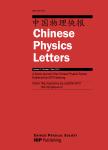Contribution of Surface Defects to the Interface Conductivity of SrTiO_3/LaAlO_3
Contribution of Surface Defects to the Interface Conductivity of SrTiO_3/LaAlO_3作者机构:College of Physical Science and TechnologyHebei University Hebei Provincial Key Laboratory of Optic-Electronic Information MaterialsHebei University
出 版 物:《Chinese Physics Letters》 (中国物理快报(英文版))
年 卷 期:2016年第33卷第8期
页 面:105-108页
核心收录:
学科分类:081704[工学-应用化学] 07[理学] 070304[理学-物理化学(含∶化学物理)] 08[工学] 0817[工学-化学工程与技术] 0703[理学-化学] 070301[理学-无机化学]
基 金:Supported by the National Natural Science Foundation of China Under Grant No 61205180 the Natural Science Foundation of Hebei Province under Grant No E2014201188 the Hebei University Science Funds for Distinguished Young Scholars under Grant No 2012JQ01 the Program for Top Young Talents of Hebei Province
主 题:of LAO in on STO Contribution of Surface Defects to the Interface Conductivity of SrTiO3/LaAlO3 for
摘 要:Based on the first-principles method, the structural stability and the contribution of point defects such as O, Sr or Ti vacancies on two-dimensional electron gas of n- and p-type LaAlO3/SrTiO3 interfaces are investigated. The results show that O vacancies at p-type interfaces have much lower formation energies, and Sr or Ti vacancies at n-type interfaces are more stable than the ones at p-type interfaces under O-rich conditions. The calculated densities of states indicate that O vacancies act as donors and give a significant compensation to hole carriers, resulting in insulating behavior at p-type interfaces. In contrast, Sr or Ti vacancies tend to trap electrons and behave as acceptors. Sr vacancies are the most stable defects at high oxygen partial pressures, and the Sr vacancies rather than Ti vacancies are responsible for the insulator-metal transition of n-type interface. The calculated results can be helpful to understand the tuned electronic properties of LaAlO3 /SrTiO3 heterointerfaces.



